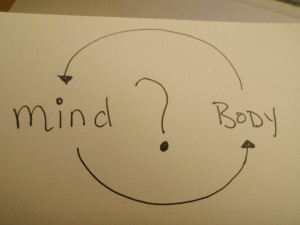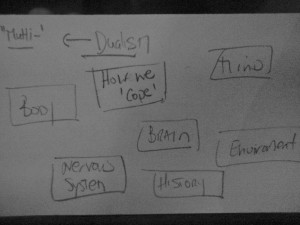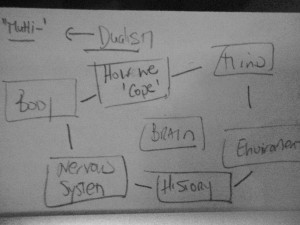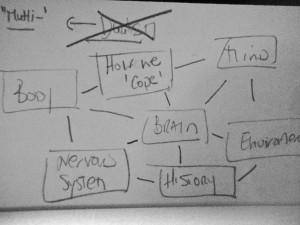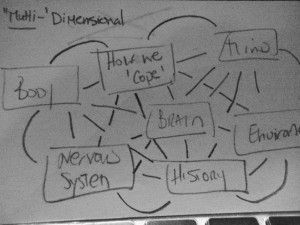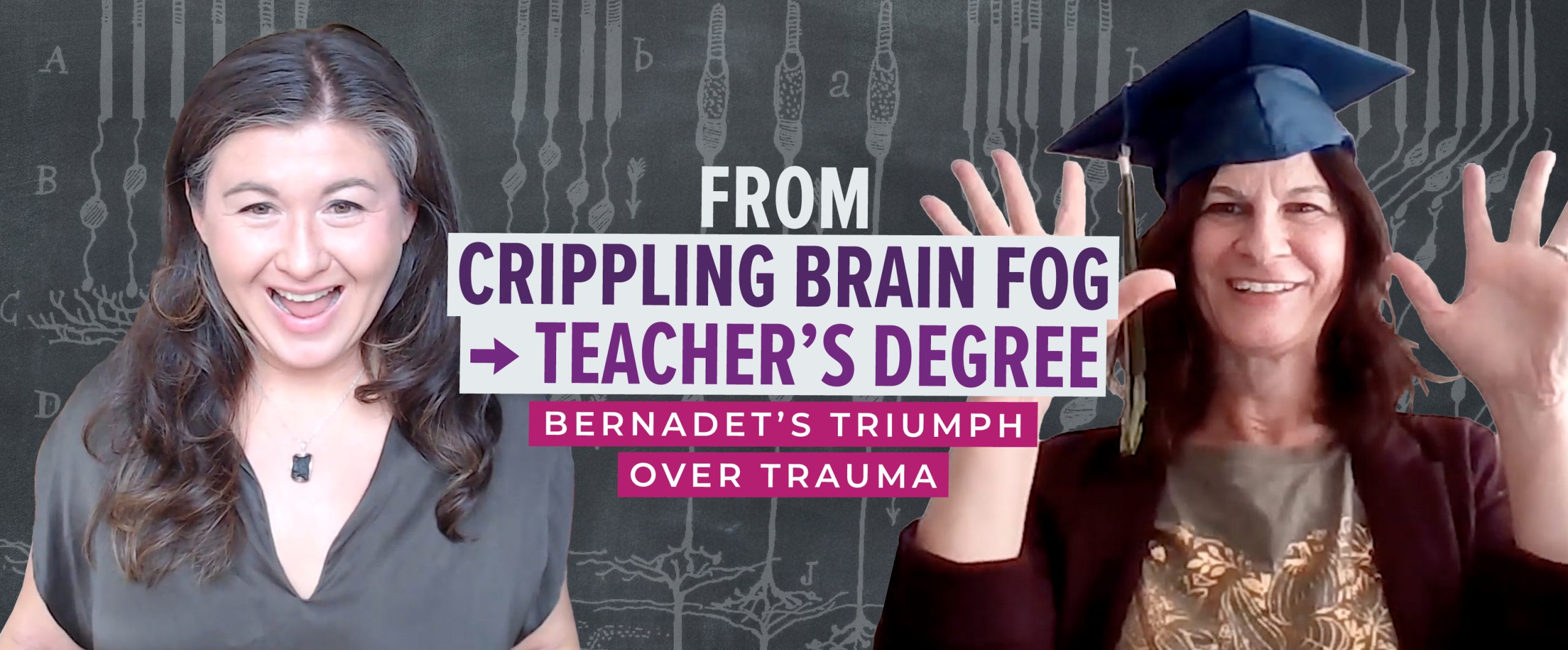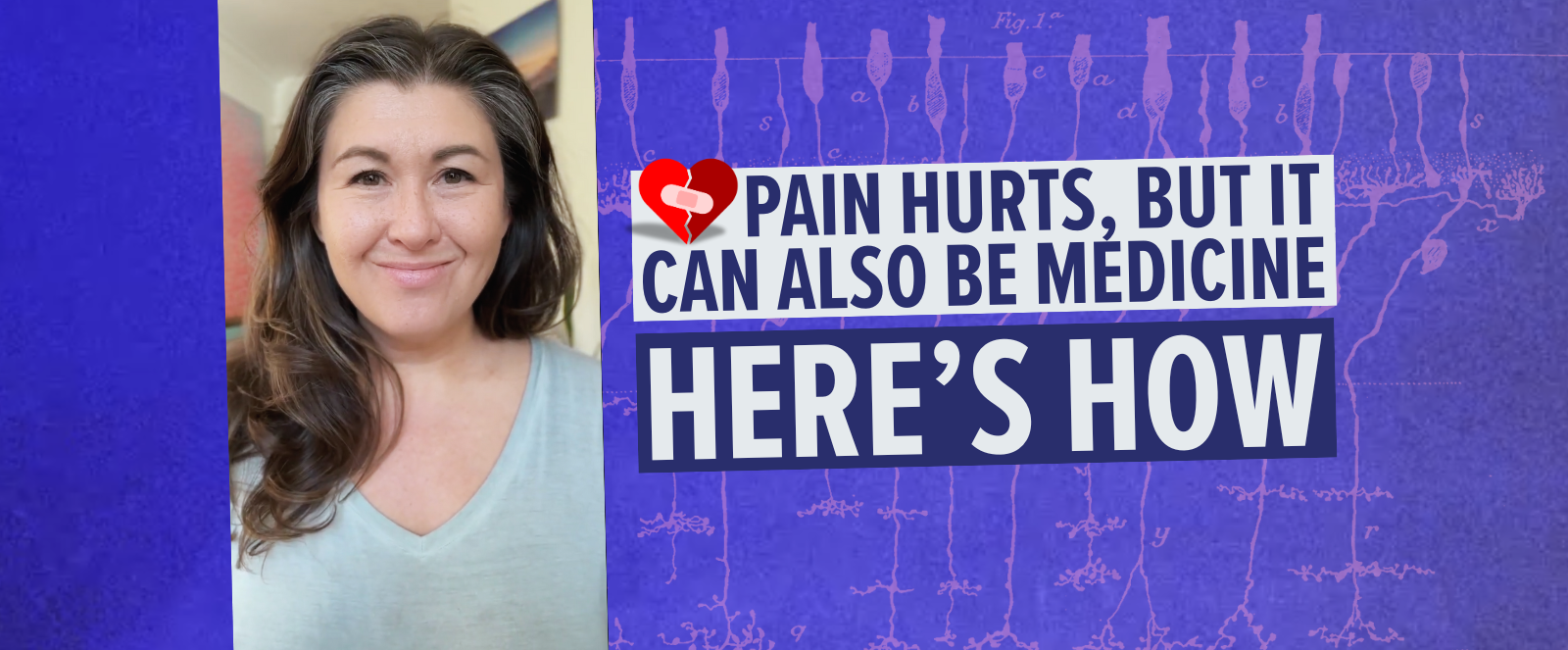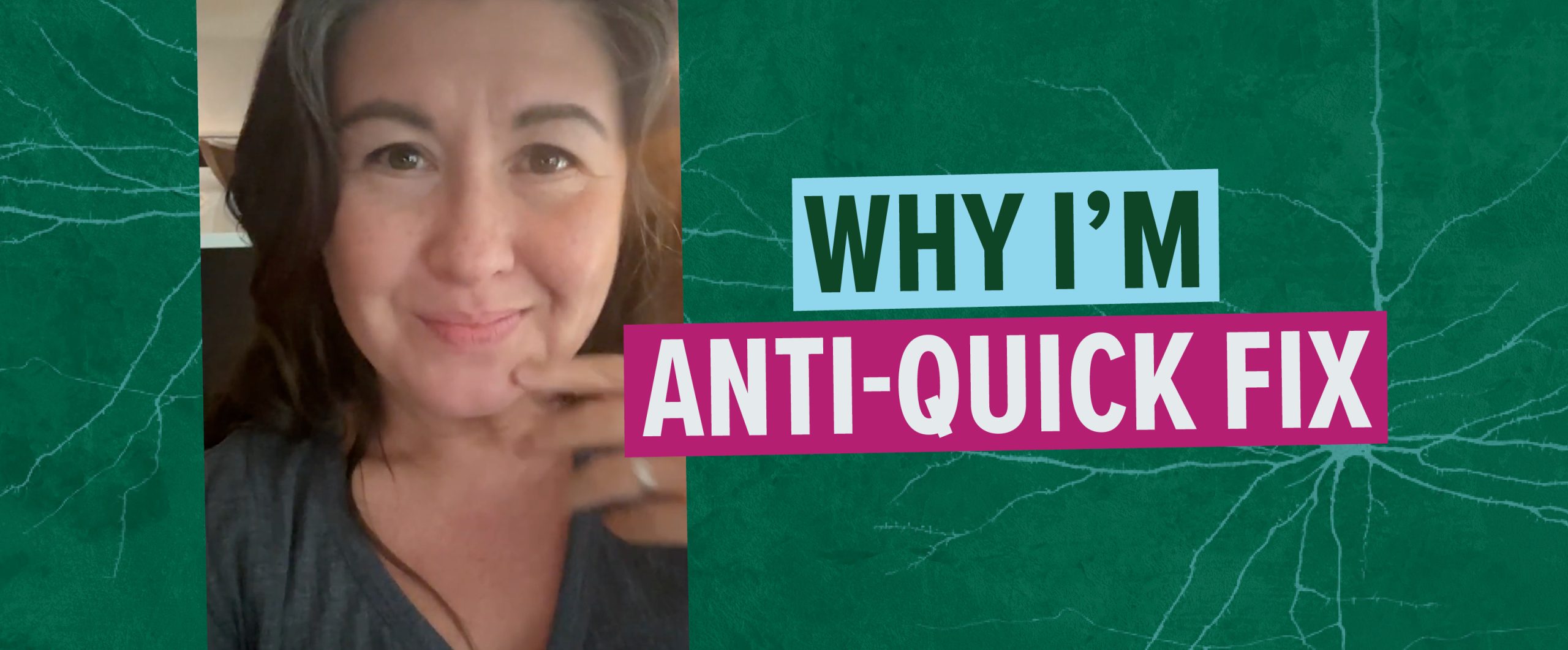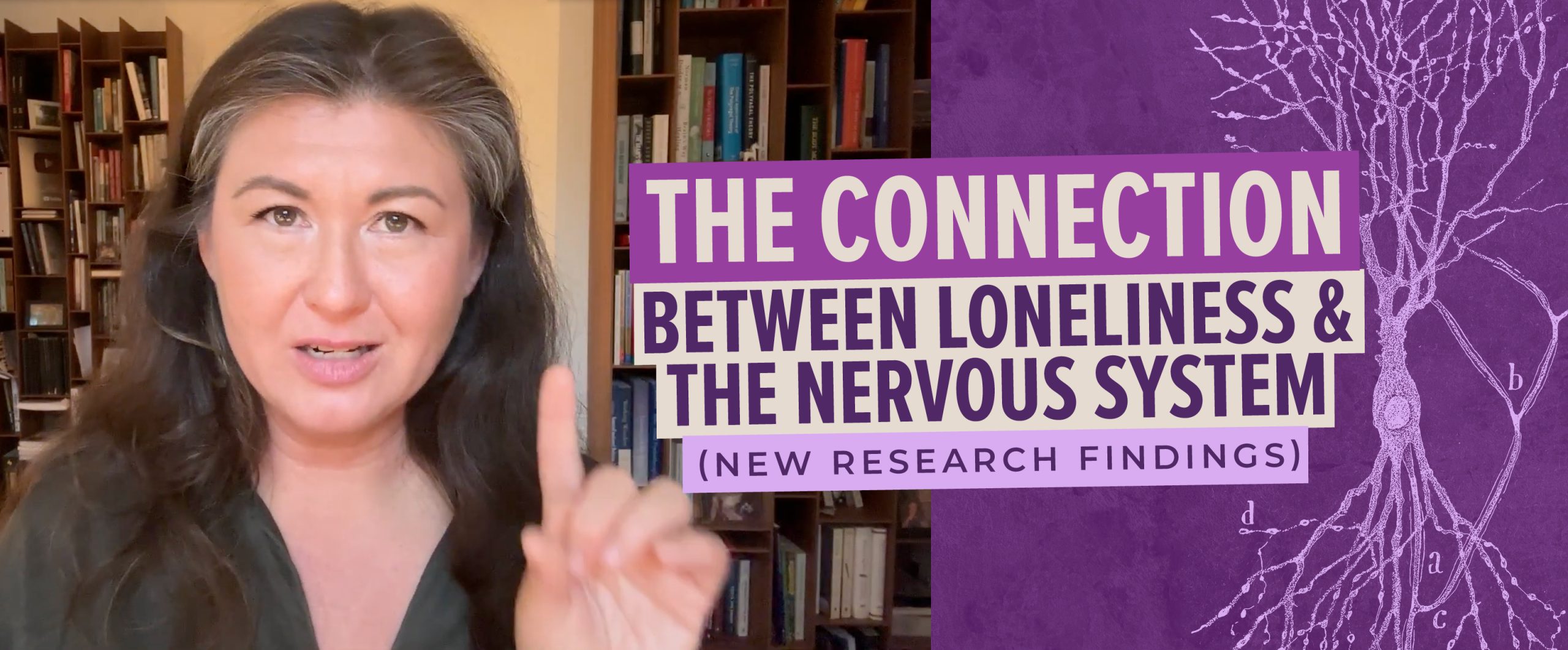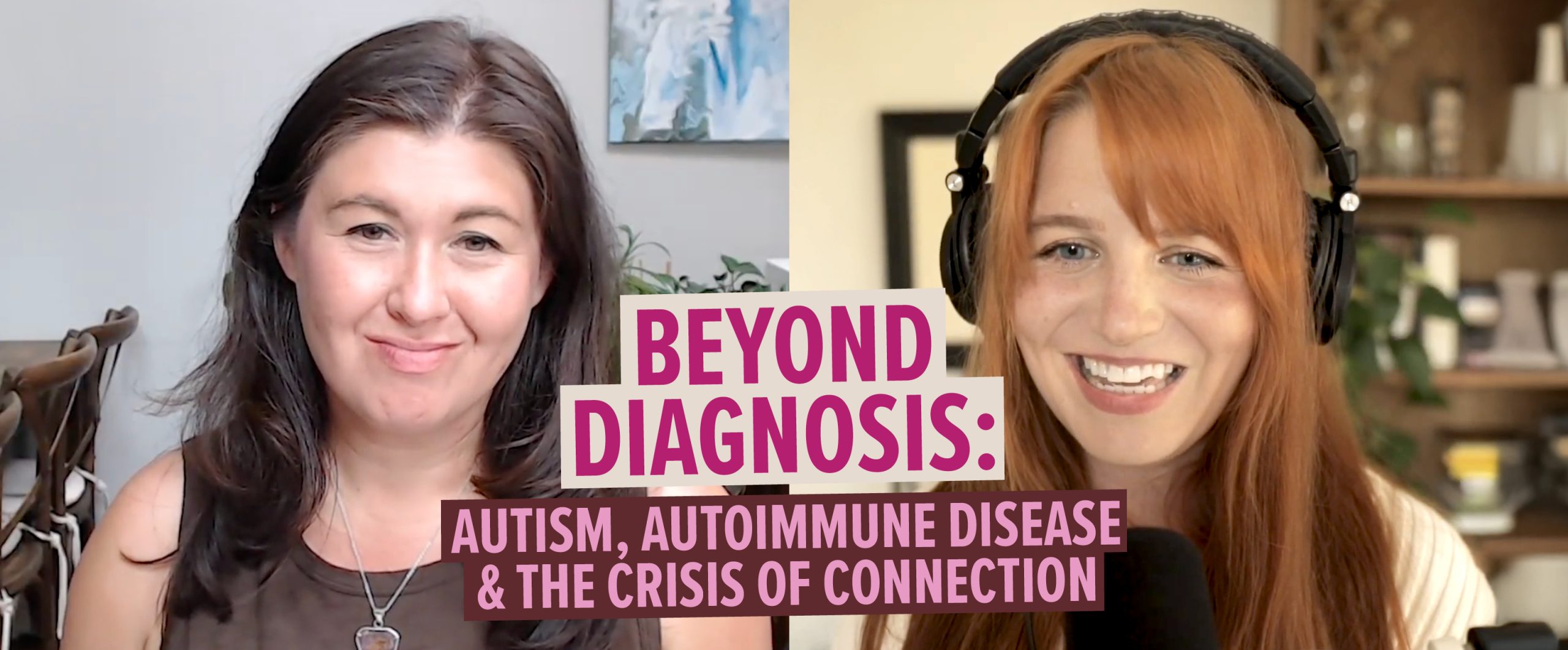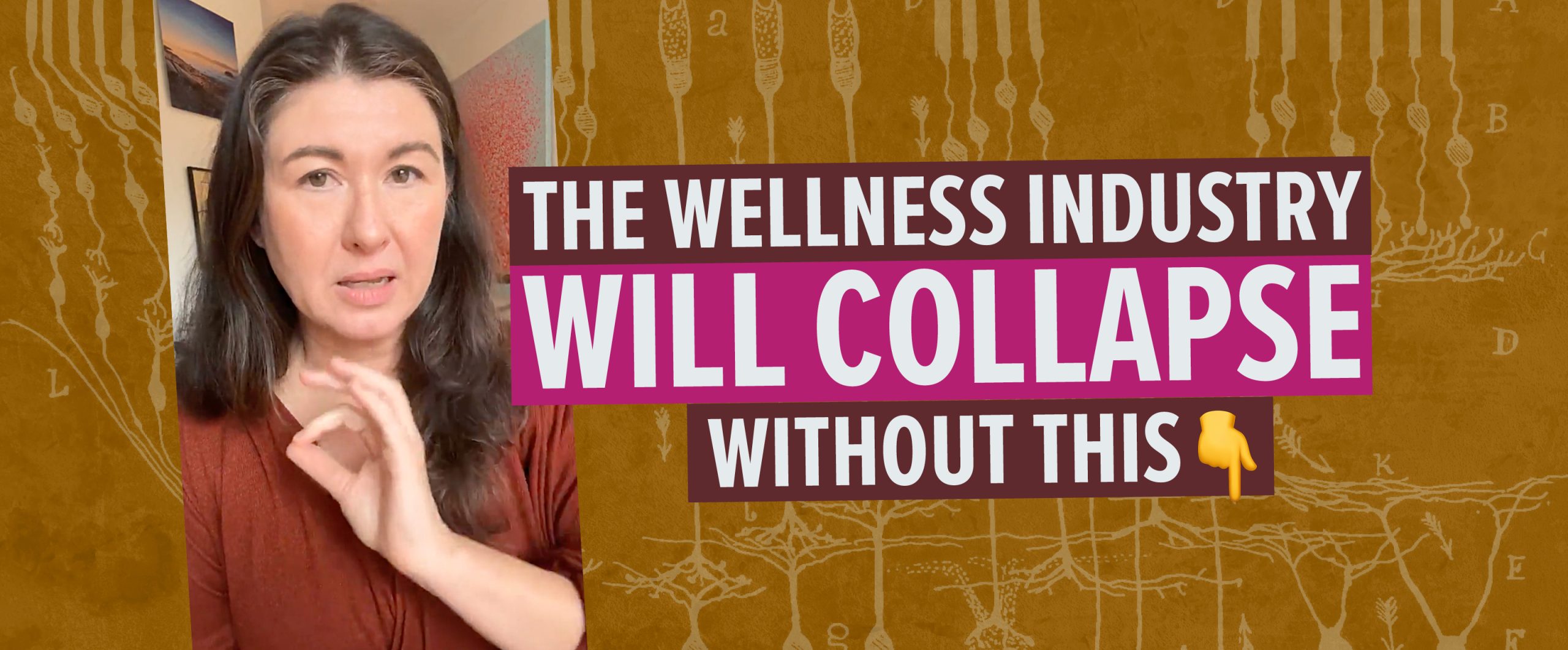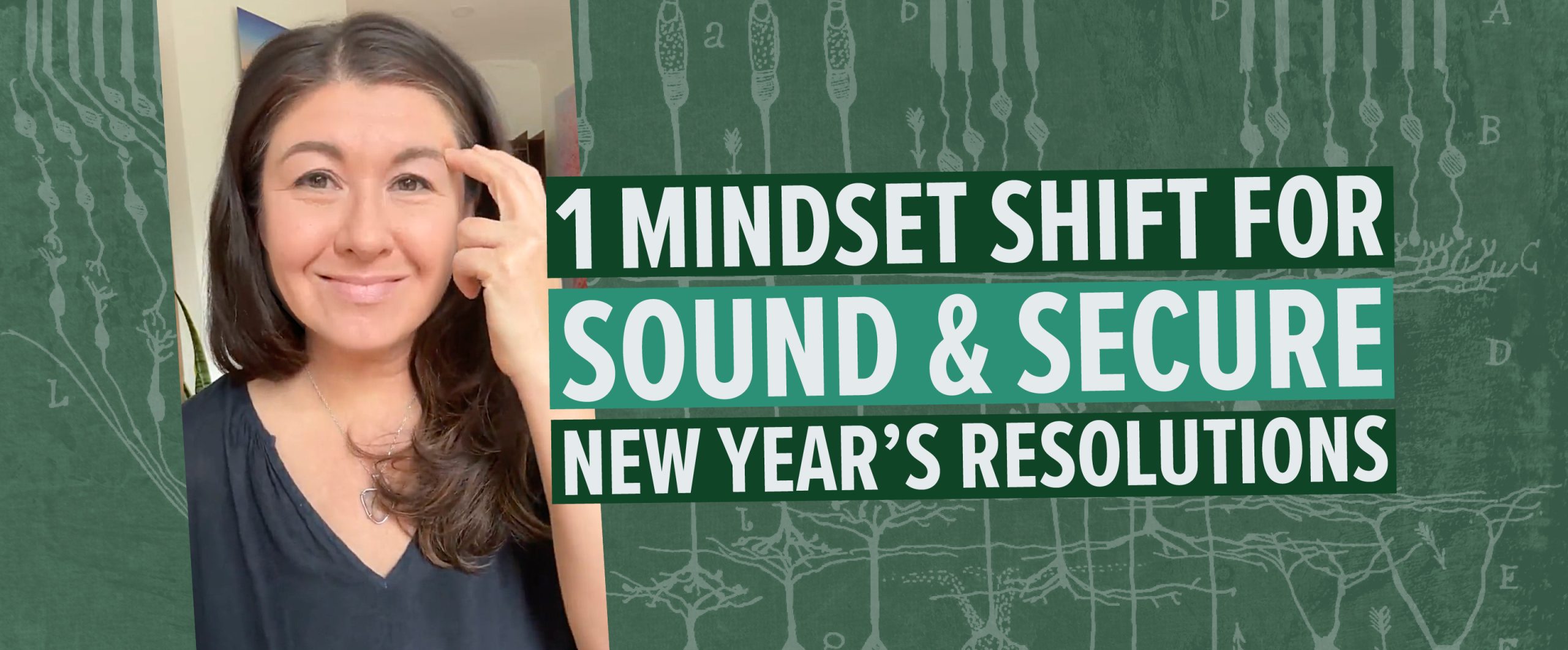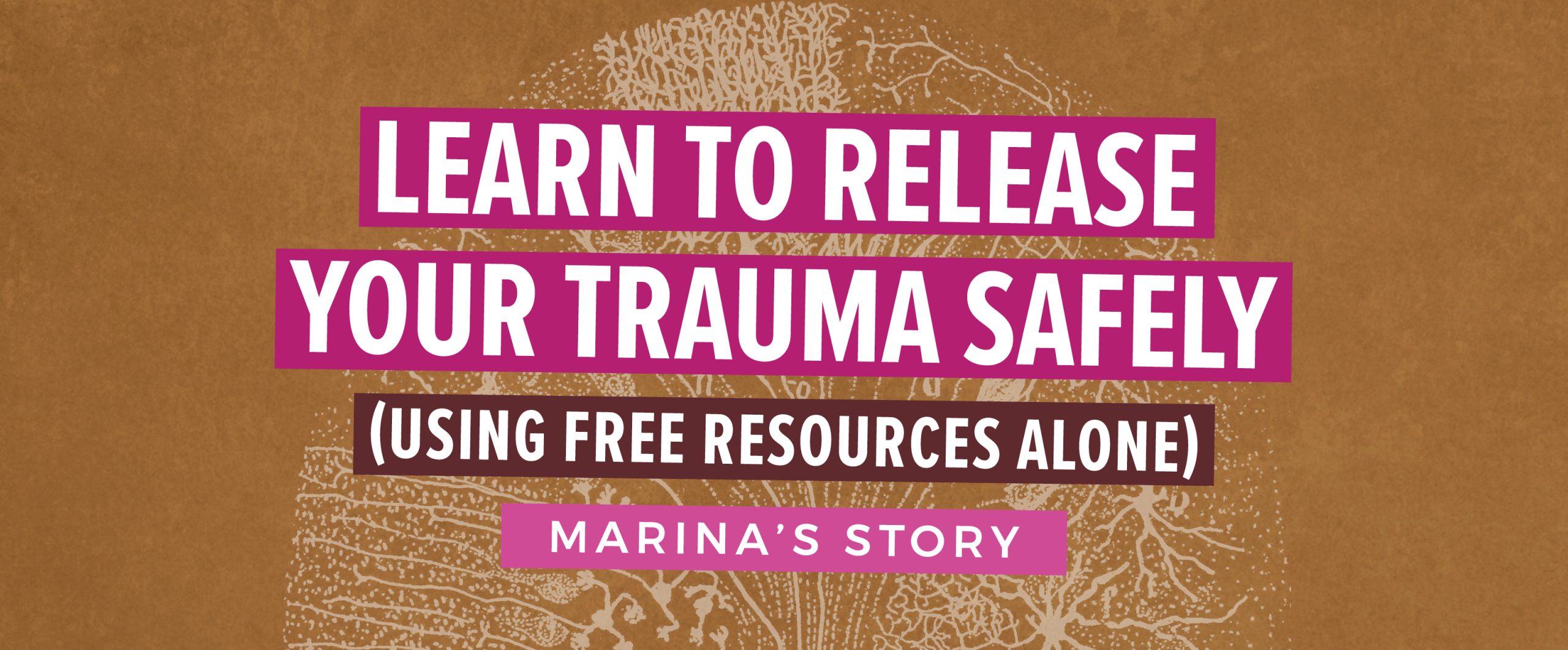Click here to re-tweet “The other shade of dualism: “Multi-Dimensionalism.”
Black – White. Sick – Not Sick. Happy – Unhappy. Health – Unhealthy. Function – Dysfunction. Flexible – Stiff. Introvert – Extrovert.
Mind – Body.
now you try….
Something goes here. Something goes there.
I’m THIS. I’m THAT.
This dualistic way of thinking about our ‘crazies’ and our ‘healthies’ is insidious in our culture.
It has the potential to actually make us crazy and take us far away from any notion of what “healthy” could in fact be.
I’ve been really thinking about dualism and how it messes us up this past week.
One of my clients has some mysterious signs and symptoms that no one, yet, can fully ‘diagnose’. I’m actually glad they have yet to see a specialist as they will most likely label this pot of symptoms and signs into a disease or disorder, and then a whole batch of “tests” will be done and “things to stay away from and do” will get summoned onto them, and no longer will they be “their name”, they will simply be “this disease/disorder”. It is quite awful how we label isn’t it?
Right now I’m recalling a lecture I listened to in my Feldenkrais training.
Moshe (Feldenkrais) was speaking about a child who had “CP” (Cerebral Palsy).
His words:
“….the CP isn’t in the child, it is in the heads of all the people around him…..”
Wise words.
We are so much more than what our present signs and symptoms may give us. Yet we attach ourselves so deeply to them and we begin to identify only with them. I think it may be because our normal routines and day to day happenings in work/play/family need to get re-arranged and shifted if we do come down with something that is sign and symptom-based, or necessitates a drastic change in how we function in life, and to add, not only do we need to shift and change, so do the people around us. They must still see us and learn how to relate to us, even though we may no longer be what they are use. It requires adaptation from all sides. For example, if you are physically “out” for a sport season, or maybe five, due to a knee injury (this is from personal experience) you find out really quickly who your true tribe is when you are no longer able to go for that ski-run or hike, or are feeling a little down and not your usual bubbly self.
But back to the tackling of mysterious signs and symptoms I mentioned above. This is what I do:
I go back to books. Books from others in the medical and health community. Those who have and do look “outside the box of dualism” and believe that sickness isn’t just a result of poor diet/lifestyle, inflammatory response, and/or viruses and/or bacteria. I also go back to my ‘foundations’ and simply look at the big picture.
And then I look at it again.
This week I found myself re-reading two books, both by Dr. Gabor Maté; Scattered Minds: A New Look at the Origins and Healing of Attention Deficit Disorder and When The Body Says No: The Cost of Hidden Stress,
and I read this:
from Scattered Minds,
“People commonly say that this adult or child is “ADD.” That, indeed, is labeling, identifying the whole person with an area of weakness or impairement. No one is ADD, and no one should be defined or categorized in terms of it or any other particular problem. Recognizing that a child’s ADD should be simply a way of understanding that helping him calls for some knowledgeable and creative approaches, not a judgement that there is anything fundamentally or irretrievably wrong with him……….our usual mode of thinking about illness (or anything else for that matter) is not comfortable with ambiguity. A patient either has pnenmonia or does not; she either has some illness affecting the mind or does not. There is a popular discomfort with any condition of the mind perceived as ‘abnormal’. But what if illness is not a separate category, if there is no line of distinction between the ‘healthy’ and the ‘nonhealthy’, if the ‘abnormability’ is just a greater concentration in an individual of disturbed brain process found in everyone? Then perhaps there are no fixed, immutable brain disorders, and we could all be vulnerable to mental breakdowns or malfunctions under the pressure of stressful circumstances. We could all go crazy. Maybe we already have.”
from When the Body Says No,
“In healing, every bit of information, every piece of truth, may be crucial. If a link exists between emotions and physiology, not to inform people of it will deprive them of a powerful tool. And here we confront the inadequacy of language. Even to speak about links between the mind and body is to imply that two discrete entities are somehow connected to each other. Yet in life there is no such separation; there is no body that is not mind, no mind that is not body. The word mindbody had been suggested to convey the real state of things.”
No labeling. No separateness.
To be prepared that ANYTHING, truly anything, can be the cause of a physical ailment and condition is a big leap to take. I mean this in reference to more mysterious ailments that have no distinct known causes. And even when you think you may have it, that is “the cause, or even cure”, never truly “think” that you’ve figured it out. This is very tough for both myself and my clients. With some cases I am more certain that: X or Y equals Y or Z, but when I truly am not sure, I say so. I put uncertainty out on the line and simply ensure them that I do have solid training, that I do see the bigger picture and that I do believe a whole host of “things” can cause our bodies to break down or more importantly, to heal.
It is still quite tough for us to see the full spectrum, not to mention, the continuum that exists between it all. It is vast. It is complex.
Here are a series of notecards (it is actually the same one – but with added lines and some erasing) that I crafted as I was pondering the mysterious signs and symptoms of this new client.
It really relates to all of us. Irene.
Reference for Gabor Maté’s Books:
When the Body Says No; Scattered Minds
I can’t recommend both of these, enough!

